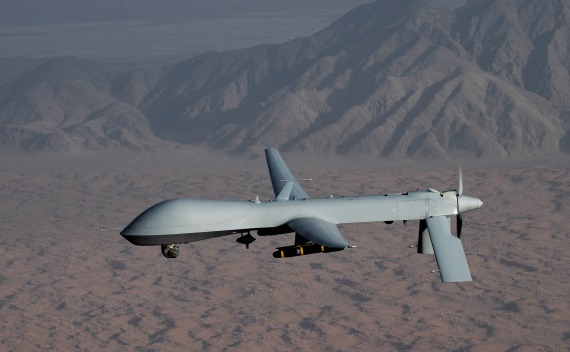Targeted Killings and America’s ’Kill Lists’
More on:

In June 2010, former Director of Central Intelligence Leon Panetta was asked by ABC News’ Jake Tapper about American-born cleric Anwar al-Awlaki, “He is said to be on an assassination list by President Obama. Is that true”?” Panetta replied, “He’s a U.S. citizen, but he is first and foremost a terrorist and we’re going to treat him like as terrorist. We don’t have an assassination list. But I can tell you this: We have a terrorist list and he’s on it.”
Before September 11, 2001, Panetta’s assertion was an accurate reflection of the norm against targeted killings, generally supported by most U.S. national security policymakers. When it was revealed that CIA Director William Casey had personally approved a failed assassination plot against Hezbollah leader Mohammed Hussein Fadlallah, President Ronald Reagan proclaimed, “Never would I sign anything that would authorize an assassination. I never have, and I never will, and I didn’t.” Similarly, then-U.S. Ambassador to Israel Martin Indyk stated in July 2001: ’’The United States government is very clearly on the record as against targeted assassinations. They are extrajudicial killings, and we do not support that.’’
The norm against targeted killings has disappeared since President Gerald Ford issued Executive Order 11905: “No employee of the United States Government shall engage in, or conspire to engage in, political assassination.” Even before 9/11, after the African Embassy Bombings in 1998, President Clinton issued three top secret Memoranda of Understanding that authorized the CIA to kill Osama Bin Laden and several key lieutenants—fewer than ten—and only if they resisted being captured.
Since 9/11, the number of assassination—or targeted killing—lists within the U.S. government has only grown to include somewhere between four and seven, depending on how you count them. The rationale for how individuals are added or removed from these lists can only be surmised from anonymous quotes by U.S. officials, and careful reporting from defense and intelligence journalists.
First, as early as September 17, 2001, President George W. Bush issued a Memorandum of Notification that authorized the CIA to kill, without further presidential approval, members of Al Qaeda or other global terrorist networks that appeared on a “high-value target list,” which initially consisted of some two dozen terrorist leaders. Reportedly, the number of individuals targeted for killing by the CIA has never been more that two or three dozen at one time.
Second, in August 2010, the Senate Foreign Relations Committee issued a report that revealed the existence of the “joint integrated prioritized target list (JPTL),” which had been developed earlier that year. (Apparently, this list was different from the “joint priorities effects list” for Afghanistan, which The Guardian claimed “assigns an individual serial number to each of those targeted for kill or capture and by October 2009 this had reached 2,058.” In addition, there were many such lists for Iraq. In June 2004, the New York Times reported fifty strikes against high-value targets in Iraq; all were unsuccessful.) As the Senate report stated of the JPTL:
“Two U.S. generals in Afghanistan said that the [rules of engagement] and the internationally recognized Law of War have been interpreted to allow them to put drug traffickers with proven links to the insurgency on a kill list, called the joint integrated prioritized target list. The military places no restrictions on the use of force with these selected targets…
The generals said standards for getting on the list require two verifiable human sources and substantial additional evidence. Currently, there are roughly 50 major traffickers who contribute funds to the insurgency on the target list. ‘‘We have a list of 367 ‘kill or capture’ targets, including 50 nexus targets who link drugs and insurgency,’’ one of the officers explained to the committee staff.”
Third, Top Secret America: The Rise of the New American Security State, by Washington Post reporters Dana Priest and William Arkin, recently revealed that there are “three separate ‘kill lists’ of individuals.”
“The National Security Council (NSC) kept one list and reviewed it at weekly meetings attended by the president and vice president. Another was the CIA’s, with no input from the NSC or the Defense Department. A third list was the military’s, but that was really more than one, since the clandestine Joint Special Operations Command had their own list as well. Some suspected terrorists were on multiple lists. But [they] were not coordinated among the three primary agencies involved in creating them. Each groups had its own set of lawyers…its own set of targeters…its own pilots, command centers, budget processes, and long logistics and personnel pipeline.”
Finally, today Mark Hosenball of Reuters published an account of a purportedly different capture-kill list for U.S. citizens, such as Anwar al-Awlaki, who was killed by a CIA drone strike on September 30. A panel of mid-level NSC officials develops a recommended list of individuals that can be targeted, which is approved by senior NSC Principals, with President Obama then notified of that decision. Hosenball writes that “A former official said one of the reasons for making senior officials principally responsible for nominating Americans for the target list was to ‘protect’ the president.”
Obama administration officials have repeatedly stated on the record that U.S. targeted killings comply with all domestic and international laws, focus only on enemy “combatants,” and are precise to limit civilian casualties and collateral damage. These justifications, however, do not shed any light on why the Obama administration has placed greater emphasis on killing suspected terrorists over the intelligence that can be acquired through capturing and interrogating them, how American citizens can be denied Fifth Amendment due process protections, and how and why people are placed on kill-capture lists.
More on:
 Online Store
Online Store